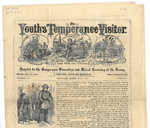Keywords: 1840s clothing
- Historical Items (24)
- Tax Records (0)
- Architecture & Landscape (0)
- Online Exhibits (12)
- Site Pages (11)
- My Maine Stories (0)
- Lesson Plans (0)
Online Exhibits
Your results include these online exhibits. You also can view all of the site's exhibits, view a timeline of selected events in Maine History, and learn how to create your own exhibit. See featured exhibits or create your own exhibit
Exhibit
Northern Threads: Two centuries of dress at Maine Historical
Organized by themed vignettes, Northern Threads shares stories about Maine people, while exploring how the clothing they wore reveals social, economic, and environmental histories. This re-examination of Maine Historical Society's permanent collection is an opportunity to consider the relevance of historic clothing in museums, the ebb and flow of fashion styles, and the complexities of diverse representation spanning 200 years of collecting.
Exhibit
Northern Threads: Silhouettes in Sequence, ca. 1780-1889
A themed exhibit vignette within "Northern Threads Part I," featuring a timeline of silhouettes from about 1775 through 1889.
Exhibit
The mainspring of fashion is the process whereby members of one class imitate the styles of another, who in turn are driven to ever new expedients of fashionable change.
Exhibit
Northern Threads: Adaptive reuse
A themed vignette within "Northern Threads Part I," featuring up-cycled and reused historic fabrics.
Exhibit
Northern Threads: Outerwear, Militia & Cadet uniforms
A themed vignette within "Northern Threads Part I," featuring 19th century outerwear, bonnets, militia and cadet uniforms.
Exhibit
Northern Threads: Early Republic era Fashion dolls
A themed exhibit vignette within "Northern Threads Part I," featuring Early Repulic-era (ca.1780-1820) fashion dolls.
Exhibit
Northern Threads: The rise and fall of the gigot sleeve
A themed exhibit vignette within "Northern Threads Part I," featuring the balloon-like gigot sleeve of the 1830s.
Exhibit
Dressing Up, Standing Out, Fitting In
Adorning oneself to look one's "best" has varied over time, gender, economic class, and by event. Adornments suggest one's sense of identity and one's intent to stand out or fit in.
Exhibit
Biddeford, Saco and the Textile Industry
The largest textile factory in the country reached seven stories up on the banks of the Saco River in 1825, ushering in more than a century of making cloth in Biddeford and Saco. Along with the industry came larger populations and commercial, retail, social, and cultural growth.
Exhibit
Rum, Riot, and Reform - Temperance Membership
"… The Washingtonian Anti-Drinking movement of the 1840s, which originated in Baltimore, was among the first to hire former drinkers as their…"
Exhibit
Home: The Longfellow House & the Emergence of Portland
The Wadsworth-Longfellow house is the oldest building on the Portland peninsula, the first historic site in Maine, a National Historic Landmark, home to three generations of Wadsworth and Longfellow family members -- including the boyhood home of the poet Henry Wadsworth Longfellow. The history of the house and its inhabitants provide a unique view of the growth and changes of Portland -- as well as of the immediate surroundings of the home.
Exhibit
The history of the region now known as Maine did not begin at statehood in 1820. What was Maine before it was a state? How did Maine separate from Massachusetts? How has the Maine we experience today been shaped by thousands of years of history?












